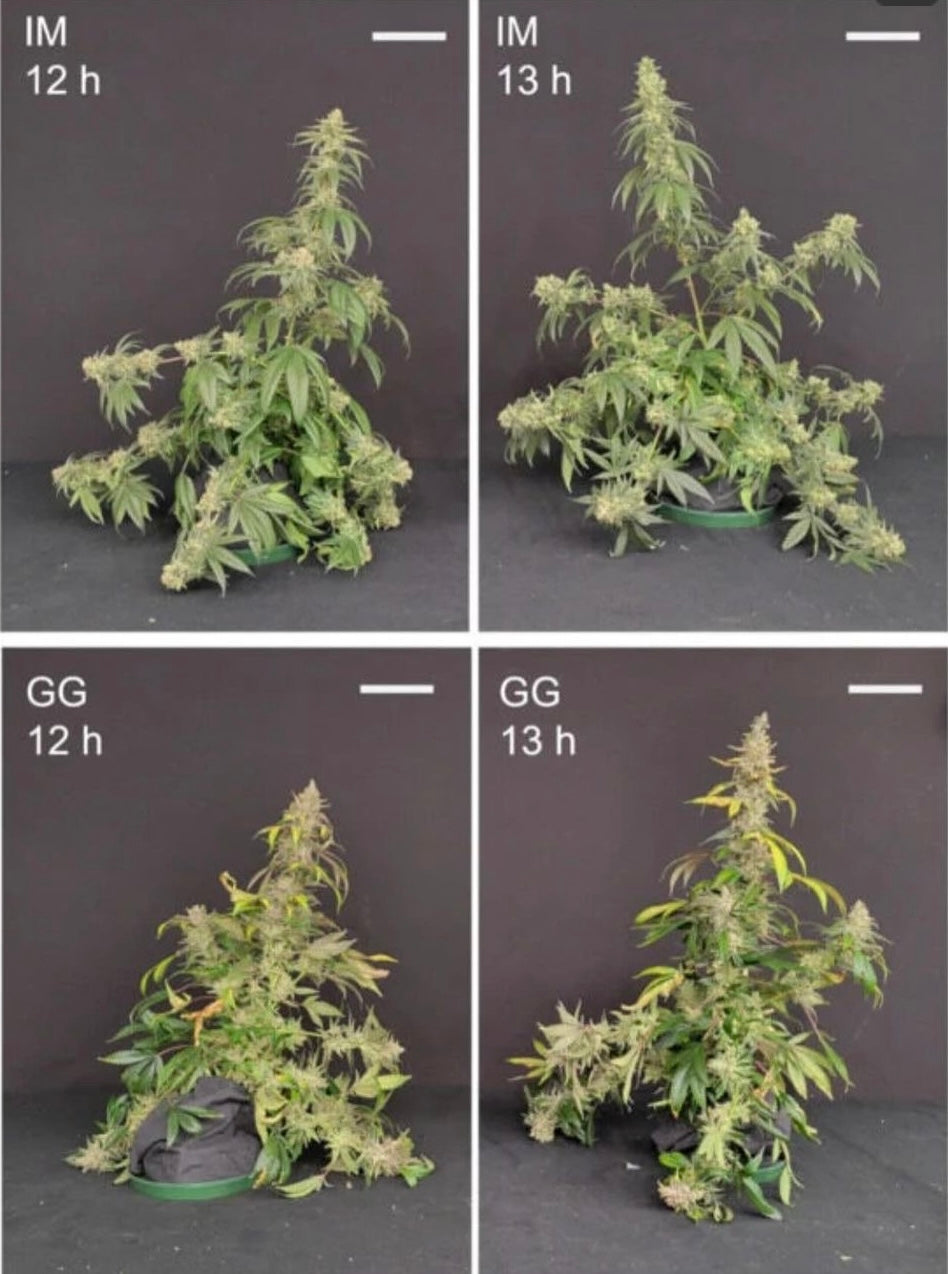Boosting Cannabis Yields by 35%: The Benefits of Adjusting Your Light Schedule
September 27, 2024 – Danielle Daly

Rethinking the 12/12 Light Cycle: Can More Light Boost Your Yields?
When it comes to indoor cannabis cultivation, every grower wants the same two things: maximum yield and top-shelf quality. While nutrients, training methods, and environment all play a role, one factor often flies under the radar—your light schedule.
Traditionally, most growers stick to a 12/12 light cycle (12 hours light, 12 hours dark) during flower. But new research shows that this standard might not be optimal. In fact, extending the photoperiod beyond 12 hours could increase yields by up to 35%—without sacrificing quality.
In this article, we’ll explore why rethinking your light schedule could be one of the easiest, most impactful changes you can make, backed by peer-reviewed research.
The Standard 12/12: Tradition vs. Optimization
The 12/12 cycle has long been the industry standard because it mimics the natural daylength that signals cannabis to flower. But newer research challenges the idea that “12 hours on, 12 hours off” is the most efficient option.
Multiple studies now suggest that cannabis plants can initiate and sustain flowering under longer light periods, leading to both higher yields and more biomass.
What the Science Says: Key Insights
1. Extended Light Cycles Can Increase Yields by 35%
Studies have shown that even adding one extra hour of light (13/11 instead of 12/12) can increase yields by up to 35%. This is partly due to the higher Daily Light Integral (DLI)—the total light a plant receives each day. But the gains were actually greater than the DLI increase alone, suggesting the photoperiod itself plays a role in productivity.
2. Quality Remains Consistent
A common concern is that more light might reduce potency or terpene expression. The research, however, found no significant differences in cannabinoid composition, aroma, or flavor between 12/12 and extended cycles. The only difference? Slightly delayed stigma browning and trichome ambering—meaning maturity takes a little longer.
3. Flowering is Delayed—but Worth It
Plants under extended photoperiods do start flowering more slowly, with delayed visible inflorescence. But the overall yield increase more than compensates for the slightly longer cycle, making it worthwhile for most growers.
Why This Matters for Growers
Here’s why extended light cycles could be a game-changer:
-
Simple & Cost-Effective – No new gear, no added expense. Just adjust your timer.
-
Bigger Yields, Same Quality – Higher production without compromising potency, flavor, or aroma.
-
Nature-Inspired – Longer days mimic peak-season sunlight, giving plants more energy to work with.
Practical Considerations
Before you flip your timers, keep these points in mind:
-
Strain Matters – Some cultivars respond better than others. Start with trials.
-
Expect Slight Delays – Harvest may take a little longer, but the trade-off is higher biomass.
-
Monitor Ripeness – Slower trichome and stigma development means patience is key.
Mammoth’s Recommendation for 8-Week Strains
For fast-flowering strains, we suggest:
-
Weeks 1–4 (Flowering Initiation): 13 hours on / 11 hours off
-
Weeks 5–6 (Mid Bloom): Transition to 12/12
-
Final 1–2 Weeks (Ripening): Drop as low as 10/14 if desired to finish strong
This strategy boosts yield in the early and mid-flower stage, while ensuring plants still finish on time with high-quality results.
Research You Can Trust
Want to dig deeper? Here are three pivotal studies that shaped our recommendations:
-
- Longer Photoperiod Substantially Increases Indoor-Grown Cannabis’ Yield and Quality
- Is Twelve Hours Really the Optimum Photoperiod for Promoting Flowering in Indoor-Grown Cultivars of Cannabis sativa?
- Moving Away from 12:12; the Effect of Different Photoperiods on Biomass Yield and Cannabinoids in Medicinal Cannabis
Sample Screen Shots.












0 comments